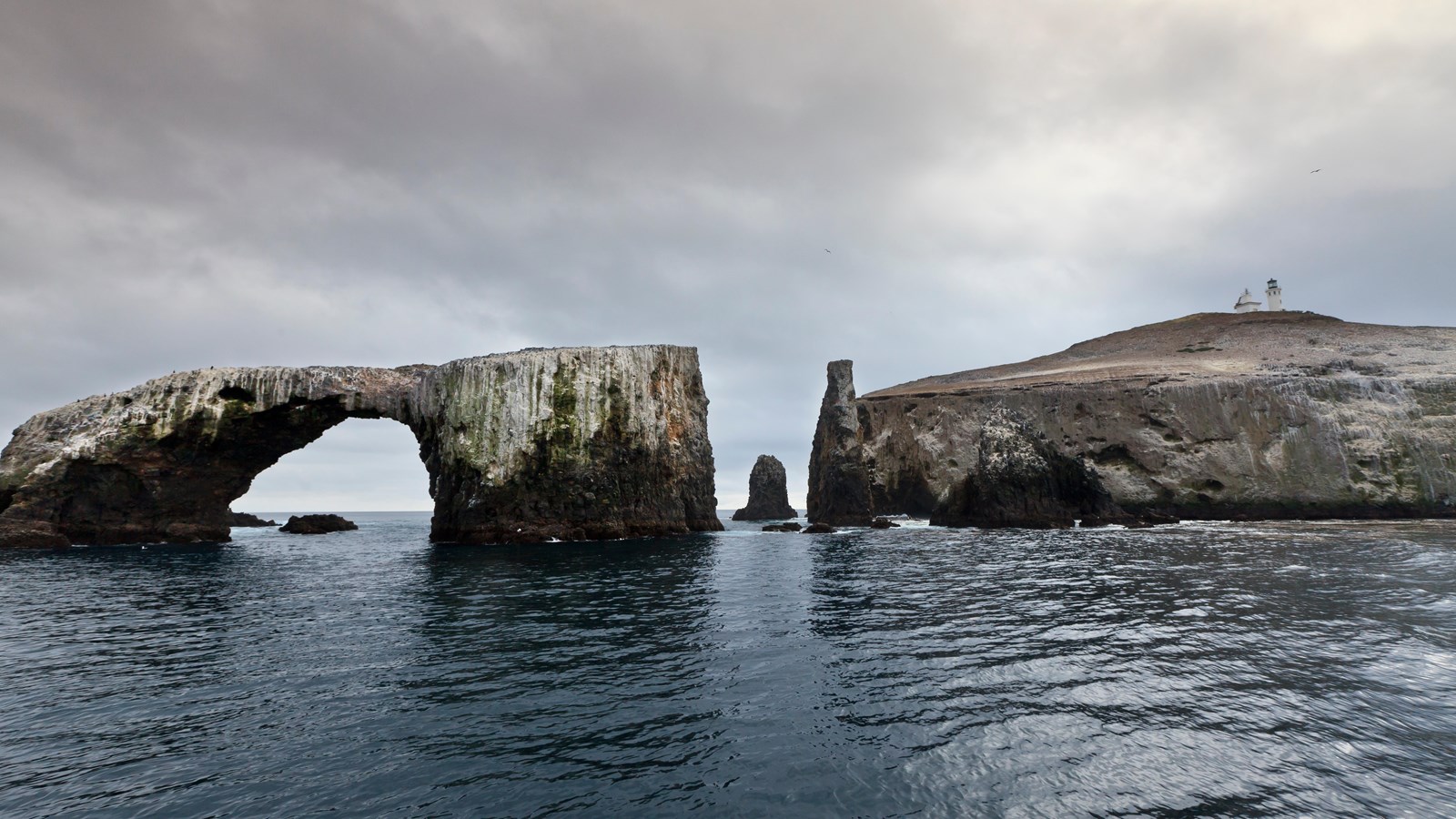Last updated: May 21, 2024
Place
Arch Rock — pasawapʰ hoti or ’aɬwaštimot̓o

Tim Hauf, timhaufphotography.com
Scenic View/Photo Spot
pasawapʰ hoti is the Chumash word for Arch Rock. It means 'house of the cormorant.' Arch Rock was also known as ’aɬwaštimot̓o.
Please see "Ethnographic Island Place Names" below for more information on island place names.
Waves have eroded the volcanic island, creating towering sea cliffs, sea caves, and natural bridges, including forty-foot-high Arch Rock-a symbol of Anacapa and Channel Islands National Park. It was first illustrated in an engraving for the U.S. Coast Survey by artist James McNeil Whistler in 1854.
Ethnographic Island Place Names
Ethnographic island place names aid in native language revitalization, illustrate cultural values, and provide tangible connections to cultural landscapes and seascapes.
Many of these place names were recorded by ethnographers and anthropologists in the late 1800 and early 1900s. J.P. Harrington was an ethnographer who worked for the Smithsonian Institution in Washington, D.C., from 1915 to 1955. He interviewed American Indian consultants, including Chumash and Gabrielino Tribal members, and recorded information about native languages and culture.
Chumash Indians Fernando Librado (Kitsepawit) and Juan Estevan Pico were the main sources for island place names. They were both born and raised in Ventura. They learned of the island places from Chumash elders, most notably Ursula (of wima) and Martina (of limuw.) Pico's interviews of Martina resulted in a list of island place names given in order from east to west (or vice/versa,) to anthropologist, H.W. Henshaw. Anthropologists have cross-referenced Pico's list with the archeological record, baptismals, and marriage patterns.
Twenty-six new place names were recently identified and mapped by Matthew Vestuto (Barbareño/Ventureño Band of Mission Indians; Advocates for Indigenous California Language Survival) with assistance from Kristin Hoppa (Archeologist, Channel Islands National Park) and the Chumash community. These names reference island peaks, water, landforms, islets, trails, caves, and beaches.
Please note that lowercase is used because capitalization is a convention in English which poses problems in the writing of native languages.
